When the growing season comes to an end and peppers are ripening, you may wonder how to save pepper seeds for next year. Saving pepper seeds is simple, and can save you some money if you want to grow the same pepper varieties each year.
Our pepper seed saving method is easy, but there are some important tips you should know about. In this article, I’ll explain how we save pepper seeds for growing next year.
Watch Video:
In this article (skip ahead):
- Choose Ripe Peppers
- Remove Pepper Seeds
- Dry Pepper Seeds
- Store Pepper Seeds
- Avoiding Seed Borne Disease
Choose Ripe Peppers
The first and most important step to saving pepper seeds is to choose fully ripened peppers. The reason for this is to ensure that the seeds inside are fully developed and mature.
Saving seeds from fully ripe peppers increases germination rates when you are planting them next season.
For example, if you are storing jalapeño seeds, you’ll want to choose a bright red pepper rather than a younger, green pepper. This is because red peppers are at the final stage of ripening.
How to know when peppers are fully ripe
A fully ripened pepper will almost always change color. Jalapeños turn from green to red when fully ripe. Green bell peppers will eventually turn orange, yellow or red (red bell peppers are in fact just fully ripened green bell peppers). Even banana peppers will eventually turn red.
Not all peppers turn red, for example, the lemon spice jalapeño pepper ripen to a bright yellow color.
Another characteristic of fully ripened peppers is a slightly softer texture. Under-ripe peppers are typically very firm. After ripening, the pepper’s flesh will soften, and a simple *squeeze* will not cause the peppers to crack.
Under-ripe peppers will usually make an audible cracking sound when squeezed. This is especially the case for thicker-skinned peppers, like jalapeños, bell peppers, and banana peppers.
Tip: Avoid saving seeds from hybrid peppers, such as store bought peppers. Seeds from hybrids will not grow exactly true to the original pepper, so it is best to buy them fresh. Unless you are open to some variation in your plant size, shape, color, and flavor, only save seeds from heirlooms.
To put it simply, look for these signs that a pepper is fully ripe:
- Change in color
- Softer skin (when squeezed)
- Easier to pick
Learn more about harvesting peppers here.
Remove The Seeds
The first step is to remove seeds from your peppers. Remember to wear gloves if you are dealing with hot peppers, even jalapeños! This will avoid the dreaded pepper skin burn.
How you remove the seeds is up to you, but I prefer to keep it simple. Slice the peppers open, and scrape out the seeds onto a ceramic or paper plate.
Tip: Don’t dry your seeds on a paper towel – the seeds will become stuck to the towel as they dry, making it difficult to remove them.
How to remove pepper seeds for storage
- Slice peppers open.
Slice the peppers in half lengthwise to reveal the seeds. Alternatively, you can try cutting the bottom off and rolling the peppers to release the seeds.
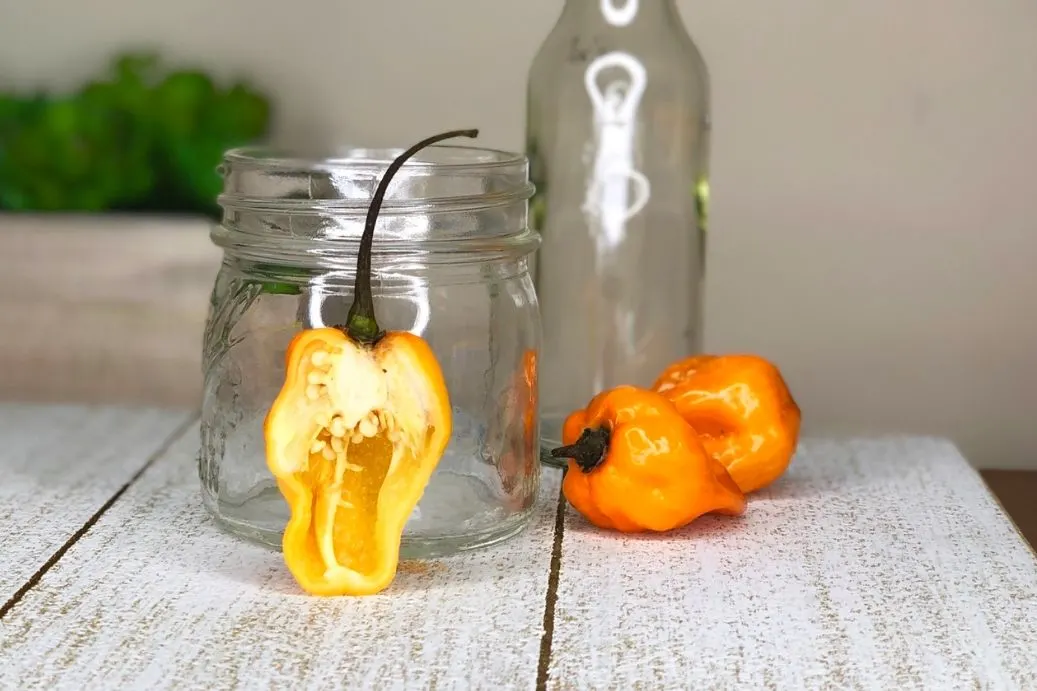
- Scrape out the seeds with a spoon.
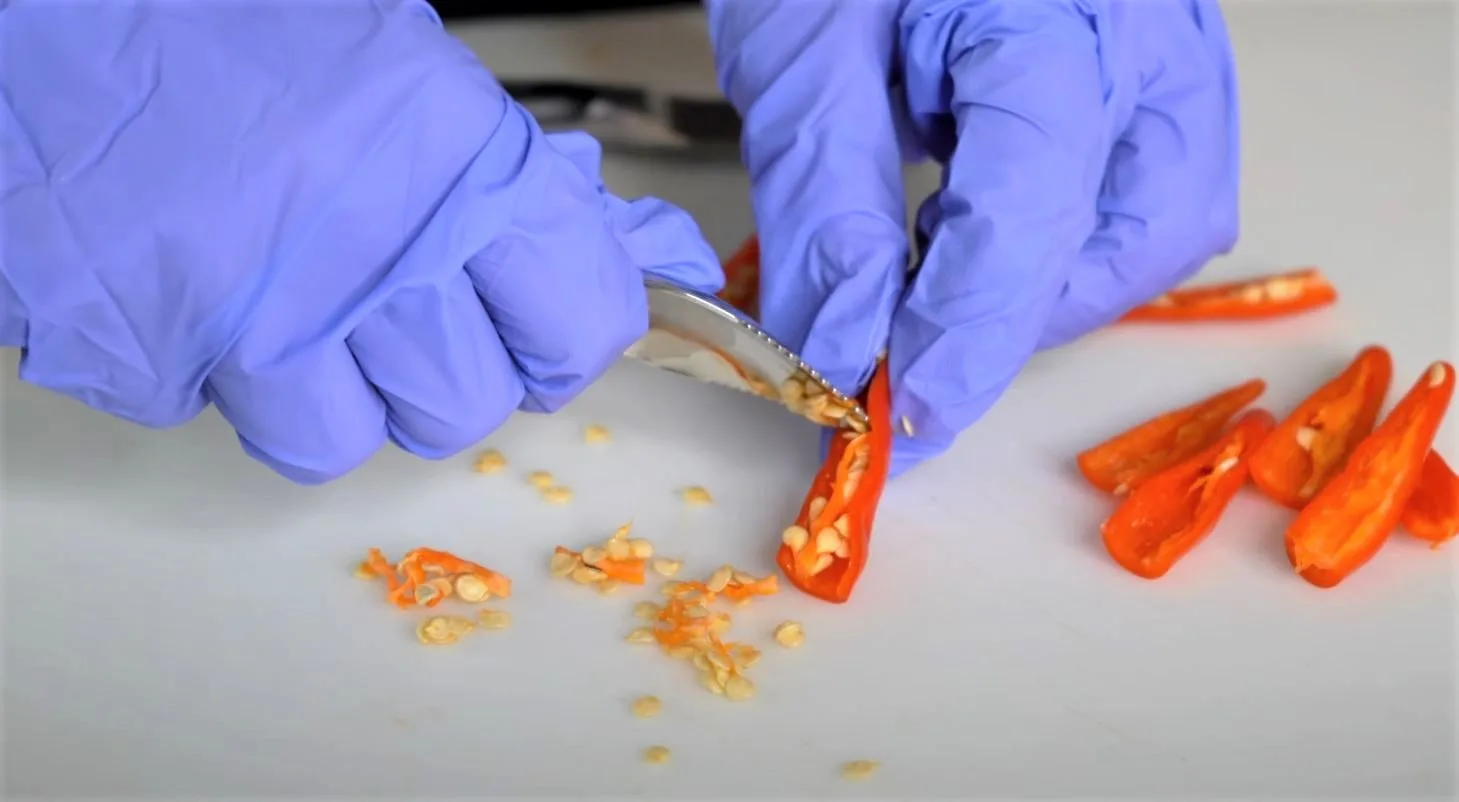
- Clean up the seeds.
Some pepper seeds will remain attached to the white pith inside the pepper. You can manually remove this to clean up the seeds, or leave it in place (it really doesn’t affect germination or storage if you leave it).
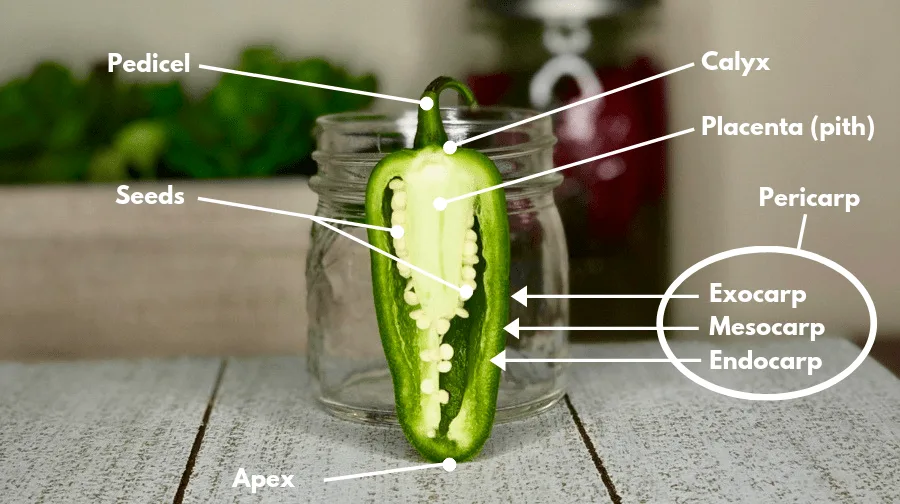
- Spread seeds and allow to dry.
Spread the seeds out evenly on a plate. Keep your seeds in a well-ventilated area for 5-7 days. You can also use a small fan for better airflow and faster drying.
Tip: Be organized! If you are saving seeds from multiple pepper varieties, be sure to dry them on separate, labeled containers to avoid mixing up seeds.
How To Dry Pepper Seeds
Allowing seeds to dry takes a while. Just keep them in a well-ventilated room. Airflow and dryness are key! Jostle the seeds around every day to make sure both sides of the seeds are getting dried out.
In a typical climate with around 40% humidity, seeds should be adequately dried within 1 week. If the humidity is higher where you live, you may need to wait a bit longer or provide some additional airflow with a fan.
How To Dry Pepper Seeds
Drying pepper seeds is as simple as allowing the seeds to sit for several days at room temperature. You can also use a dehydrator, but be sure that the temperature does not exceed 100°F.
Steps:
- Spread pepper seeds out in an even layer on a plate
- If humidity is hight, aim a small fan at the seeds
- Jostle the seeds daily, careful not to mix up different seed varieties
- Test for dryness after 7 days
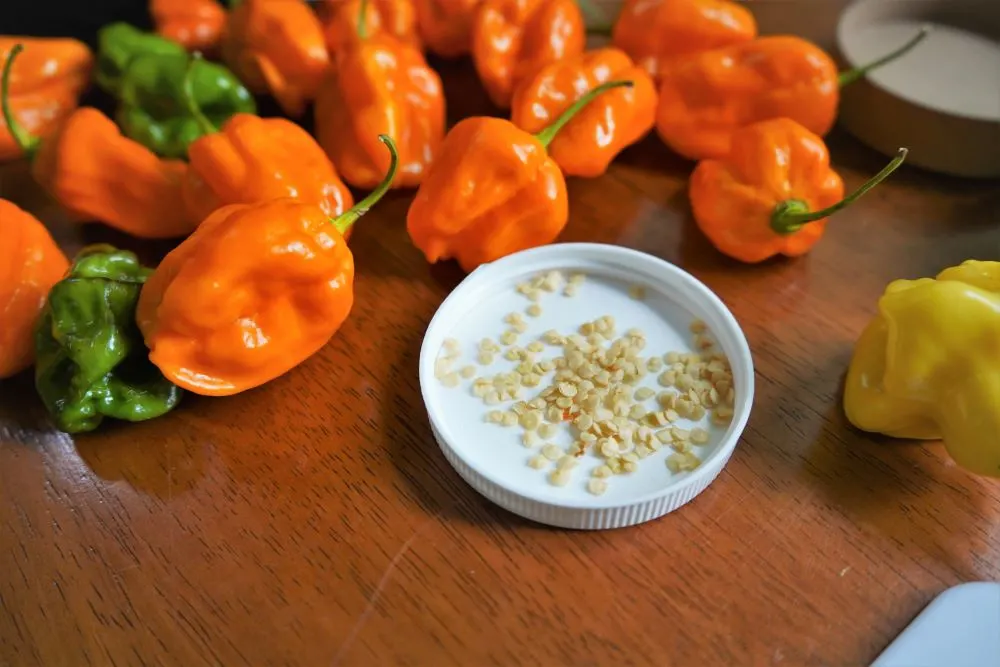
How do I know when pepper seeds are dry?
If you store your pepper seeds before they are properly dried, you may end up with mold growth or bacteria. This is bad news and can ruin your seeds or infect future plants. To make sure you have a fully dried pepper seed, use this simple method:
- Break test – Test for dryness by breaking a seed in half, or cutting it with a knife. Properly dried pepper seeds should *crack* in half rather than squashing or bending. If they are not 100% firm, they are not yet dry enough to be stored.
Once they are properly dried out, you are ready to store your pepper seeds for several months (or even years!) until it is time to plant.
Save Seeds in a Sealed Container
When your pepper seeds are dried, they must be kept dry and cool. Label your seeds and store them in a sealed container. You can use plastic bags, paper envelopes, or even a ball jar. Ideally, keep your dried pepper seeds sealed in the refrigerator at around 40°F.
If you plan to store your seeds for an extended period of time, keeping a food-grade desiccant packet inside can help keep the seeds fully dry.
Tip: Always label your seeds! Even if you are only storing one pepper variety, it is best to record the date and type of seed to make things easier later on.
After you have packed away your dried seeds, don’t forget to use the remaining fresh pepper flesh for drying, or one of the many other alternatives for preserving peppers! Don’t let your hard work go to waste.
Next year, use our pepper growing guide to use your saved pepper seeds!
How can I tell if old pepper seeds are still good?
Over years of gardening, you may accumulate old seeds. Pepper seeds can remain viable for many years if properly stored. However, you can run a simple test to determine which seeds are more likely to sprout.
The viability water test – To check old seeds for viability, place them in a glass of water. Wait 24 hours, those that have sunk are viable and will more likely germinate.
Note: Only run this test when you are ready to plant your pepper seeds. After soaking the seeds, they should be planted right away, as the moisture may initiate germination.
Avoiding Disease When Saving Pepper Seeds
One important thing to consider when saving pepper seeds is the possibility of viruses or bacteria. Some diseases are seed-borne, meaning they can be spread from a seed into the plant. Here are a few things to consider before saving pepper seeds.
Never save seeds from a diseased plant. If you suspect that your pepper plant was infected with a disease, whether it be viral or bacterial, don’t save those seeds! Many viruses, including the prevalent mosaic virus, can be seed borne. This puts you at risk of spreading the virus to next year’s plants through this year’s seeds.
Learn more about pepper plant diseases & issues here.
Sterilize seeds if you suspect infection. Depending on where your pepper seeds came from, you may worry that they carry infection. There are many methods to sterilizing seeds, some more intense than others.
While this is not usually necessary, if you are trying your hardest to avoid disease, this can help mitigate the risk. Note: Sterilization should be done at the time of planting, not during the pepper seed saving process.
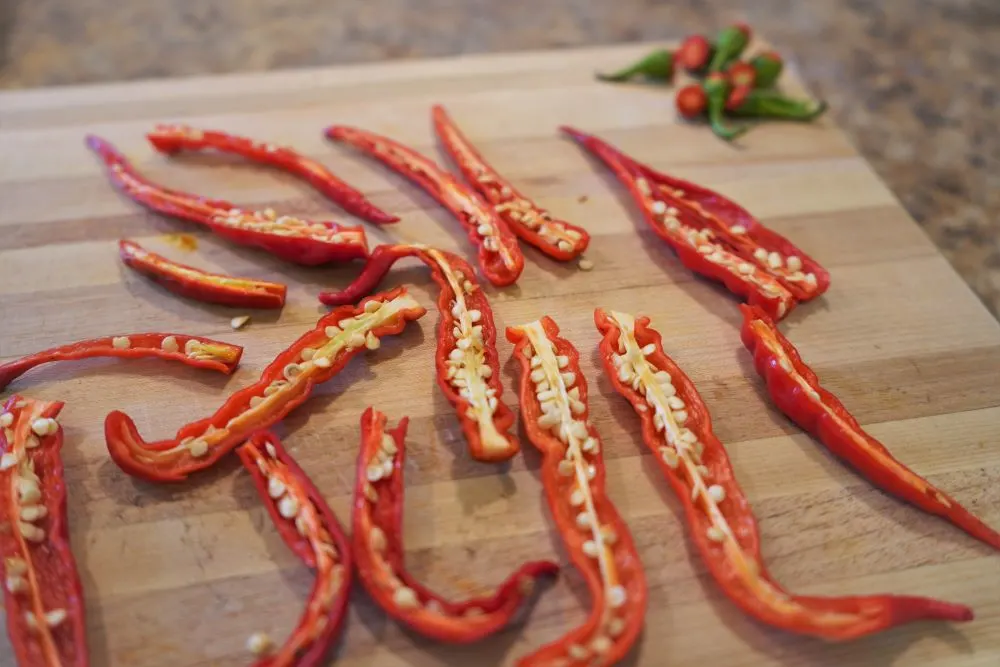
I hope this article helped you learn how to save pepper seeds for planting next year. Almost nothing is more satisfying than growing a new plant from your very own pepper seeds!
Good luck, and let us know if you have any other recommendations for keeping pepper seeds.
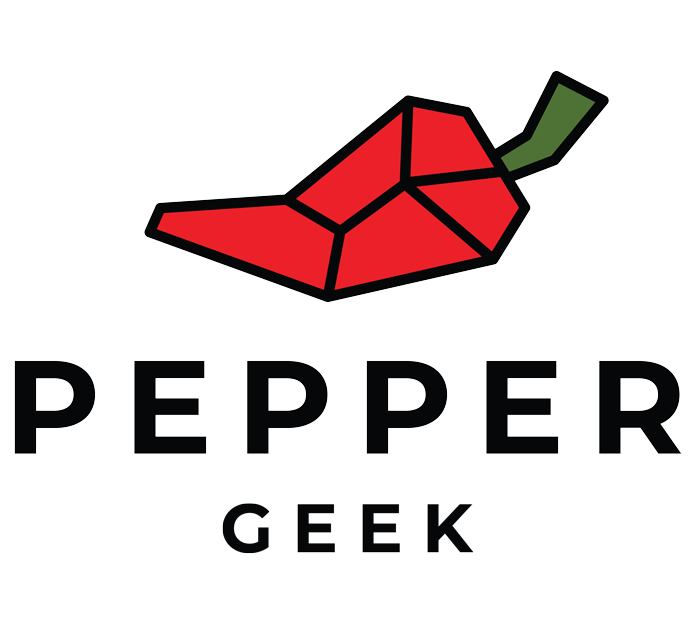
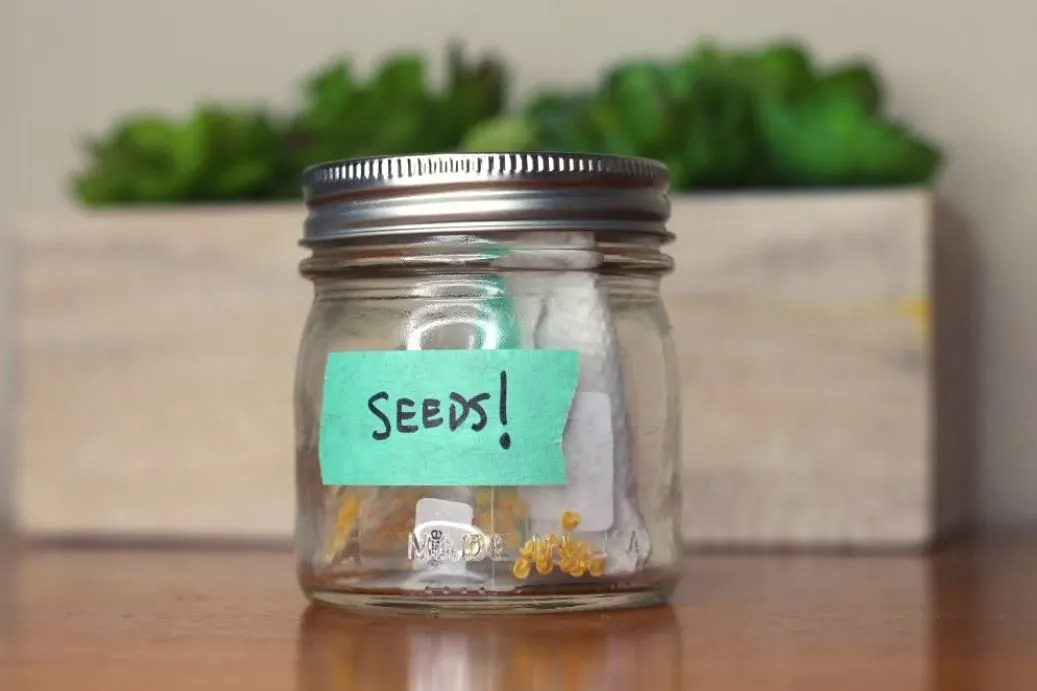
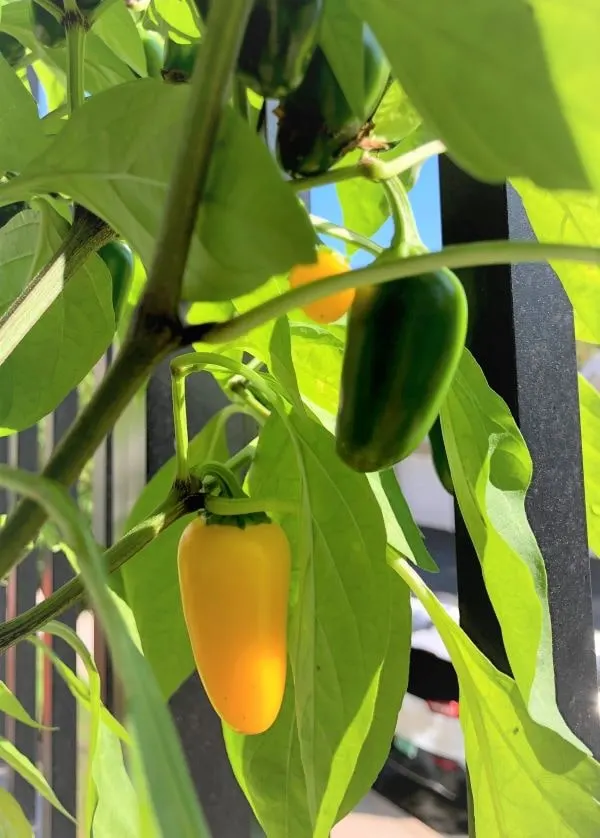
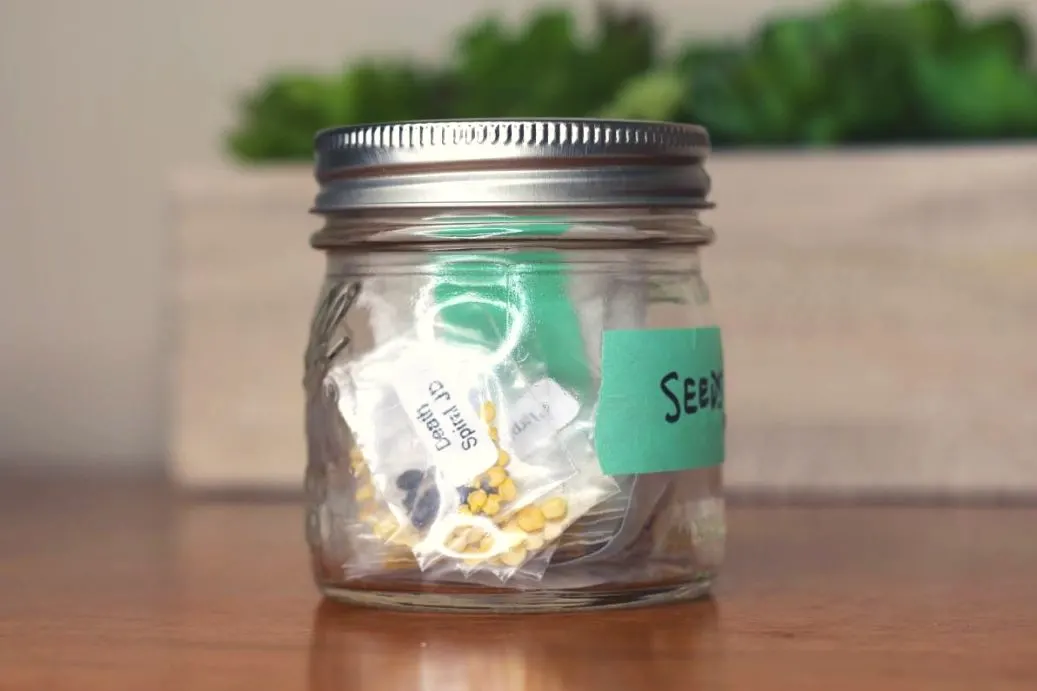

JohnDavid
Monday 26th of February 2024
After properly drying out the seeds, can you store them in the freezer like most other seeds? I wasn't sure considering peppers have such a strong affinity for heat. I plan on keeping them in a sealed container with desiccant packs in the containers, in the freezer.
peppergeek
Saturday 2nd of March 2024
The freezer should be okay if they are completely dried. I prefer the fridge as I don't want the seeds to go into any sort of deeper hibernation. Haven't tested this though, and freezing is probably better for very long term storage.
Brouchie83
Saturday 16th of September 2023
Good read, I have a quick question though.
My wife and I have a food dehydrator we use for the peppers we harvest.
It can go as low as 90 deg. Fahrenheit. Have you used a food dehydrator for drying out seeds or have you ever known/heard of someone using one?
peppergeek
Wednesday 20th of September 2023
We haven't done it personally, but there shouldn't be any issue as long as you stay below 120°F or so. I would keep the seeds on the far side (away from the heating element) to be on the safe side.
Regina
Sunday 10th of September 2023
Hi Calvin, I want to save seeds from my favorite hot peppers, Italian Long Hots. After using your method to dry the seeds, I am hoping next year I can plant them and have my own plants. How many seeds per container? I only use organic soil and your recommended organic fertilizers. Due to space issues I plant them in 5 gallon buckets. With that being said how many seeds per small container to get to the point of hardening them off and finally into my 5 gallon buckets? Thanks for all that you do and your awesome website, you are so inspriring!
Bob
Sunday 10th of September 2023
GREAT TIPS -- QUESTION WILL SEEDS FROM FROZEN HABENEROS GERMINATE?
peppergeek
Monday 11th of September 2023
It is very unlikely if the frozen peppers were not dried first. The water in the seeds expands and causes damage to the seed
Stephen (a pepper Geek!)
Saturday 9th of September 2023
Cool to find You! . . . does refrigerating ripe peppers before you harvest the seeds harm the seed?
peppergeek
Monday 11th of September 2023
Nope, they should be fine! Freezing however will do harm to fresh seeds.